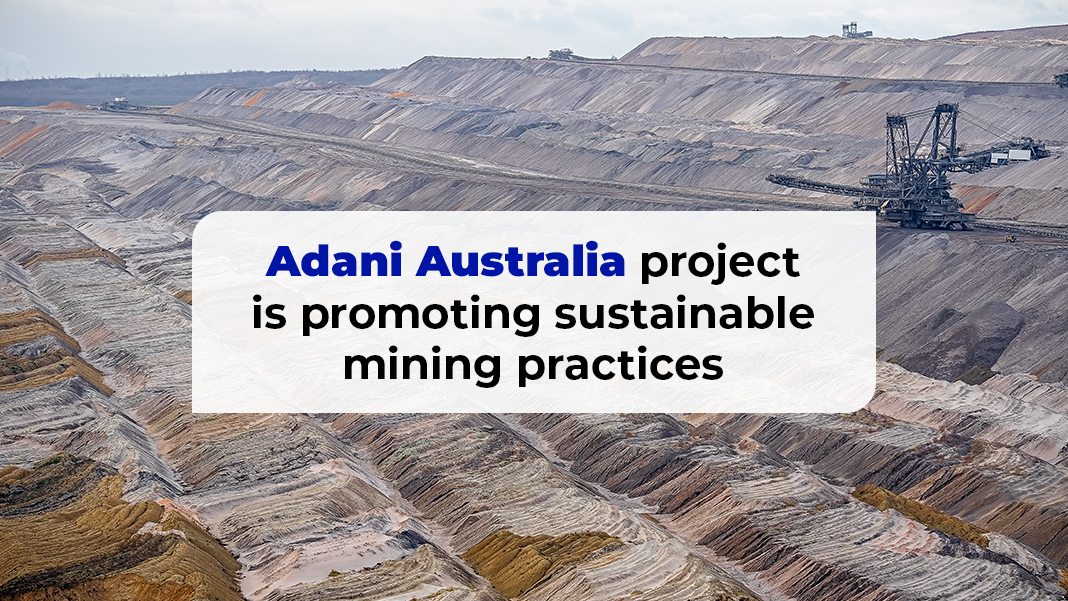Sustainable mining entails minimizing the detrimental effects that mining operations have on the environment, society, and governance. The Adani Australia project’s sustainable mining strategy aim to protect the environment while serving society’s resource needs. The project ensure that future generations’ needs may also be addressed. It supports job creation and raise the GDP of the economy. Mining Industry is one of the main sectors for economic growth. It provides numerous important industries with the necessary raw materials.
Excellence in mining requires a solid commitment to cutting-edge sustainable development practices.
The Adani Australia project aims at taking care of the environment
The food we eat, the air we breathe and the water we use to irrigate our crops all come from our forests, rivers, seas and soils. They provide additional products and services essential to our well-being, happiness and prosperity. These natural resources are frequently called the world’s “natural capital.” Therefore, it is imperative to protect the ecosystem. The Adani Australia project has several environmental initiatives in place, including:
· Water management: The project will use recycled water and storm water for dust suppression, mine water treatment, and other purposes, reducing its reliance on fresh water.
· Air quality: The project will use the latest emission control technology to minimize air pollution.
· Land rehabilitation: The project will rehabilitate the land after mining, including replanting native vegetation.
· Biodiversity conservation: The project will work to protect endangered species, such as the black-throated finch.
· Community engagement: The project will work with local communities to minimize the environmental impact of the project.
The Adani Australia project has also committed to investing in renewable energy projects such as solar and wind farms. These projects will help to reduce the project’s overall carbon emissions. The environmental initiatives of the Adani Australia project have been criticized by some environmental groups who argue that the project will still have a significant negative impact on the environment. However the project’s proponents say that the environmental measures are sufficient to mitigate the project’s effects.
Ultimately the environmental impact of the Adani Australia project will depend on how well the ecological measures are implemented. The project’s proponents are responsible for ensuring that these measures are effective and that the project does not have a significant negative impact on the environment.
The Adani Australia project seeks to involve the community
The Adani Australia project can ensure that it works smoothly and that the budget is spent correctly by continuously assessing the community’s needs, priorities, and essential stakeholders. Acknowledging and expressing the needs and interests of all participants, including decision-makers, will encourage sustainable decisions. This will improve community commitment to decisions and acceptance of results as local expertise from various groups influences and produces inclusive, practical solutions.
It will enable the community to participate in decision-making that directly affects their way of life. Therefore creating an engaged accountable community is crucial. Second community involvement in the development process fosters a sense of ownership. They feel a sense of ownership since they believe it is their growth. The top-down method does not produce this sense of ownership. Thirdly, community involvement ensures the sustainability of the development process.
People are generally active in community work from the planning stage through the implementation stage.
The project will create massive job opportunities
As more people find employment, the demand for goods and services rises causing businesses to grow and creating new jobs. Numerous societal issues such as poverty, crime and social unrest, can arise due to unemployment. The Adani Australia project will generate employment opportunities that will drive economic expansion. Increases in real GDP, or the value of national output, income, and expenditure, indicate financial growth.
The main advantage of economic growth is a rise in living standards. Which translates into higher real wages and the capacity to invest more money in sectors like health care and education. When someone is working their employer pays them. As a result, they have money to spend on things like food, clothing, entertainment and many other things. Demand increases directly as a function of consumer expenditure.
Economic growth can be influenced by capital goods, labor force, technology and human capital changes. Economic growth is frequently assessed by estimating the rise in the market value of newly created products and services. Employment can help with social healing, encourage displaced persons to return and enhance long-term social welfare. For example, companies won’t expand their production capacity if their sales aren’t increasing, so it’s crucial to ensure enough demand to support supply.
However, increases in output based purely on a demand stimulus will only be fleeting without supply actions. The supply strategies vary, from labor and market reforms to clearing electricity sector bottlenecks. Enhancing public infrastructure spending in many nations makes sense since it would help supply and boost short-term demand. This means that countries must employ all monetary, fiscal, and structural policies to maximize domestic growth and increase the impact through international cooperation.





